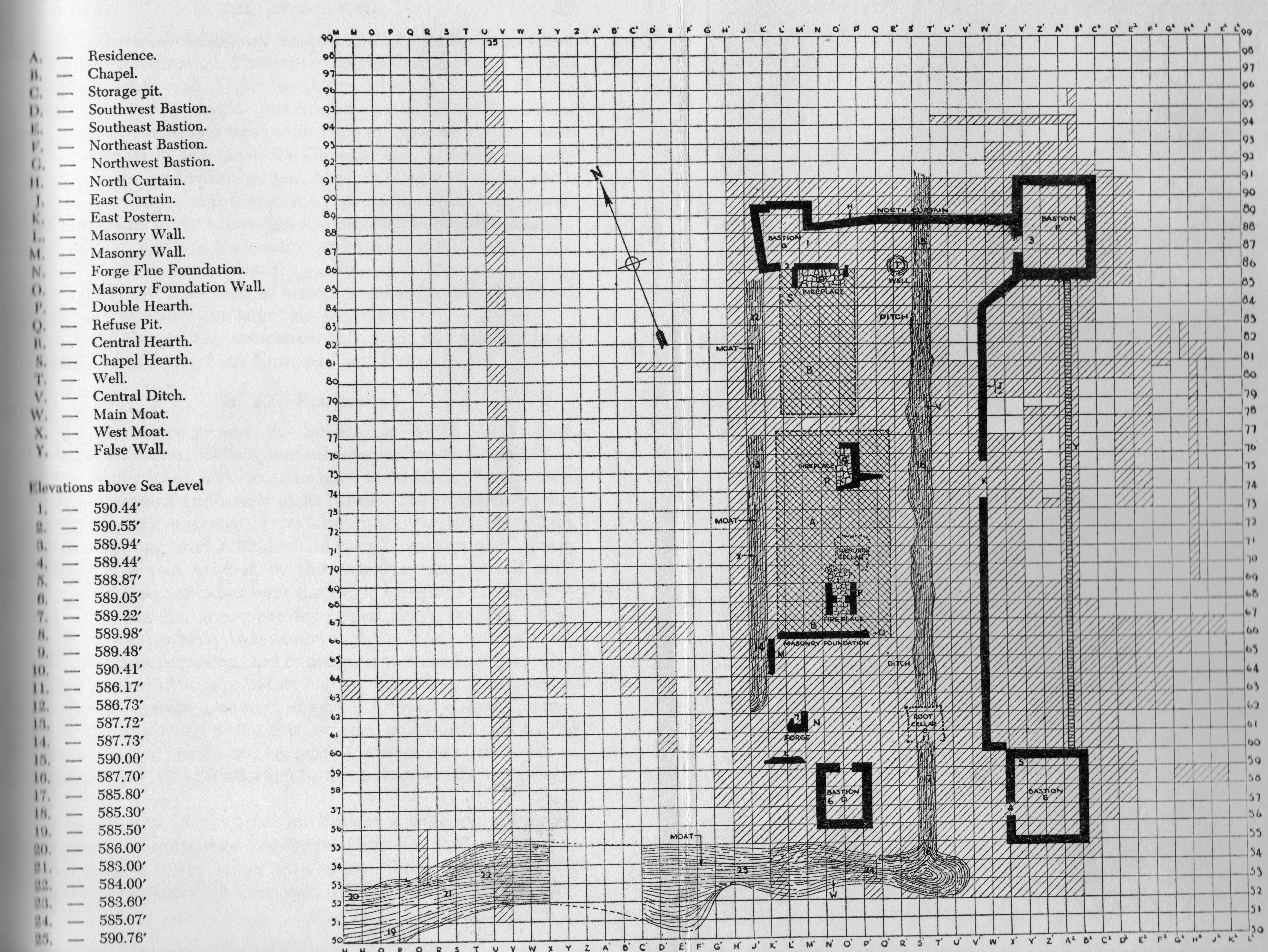Map of Kidd’s Excavations

Kidd, Kenneth E., The Excavations of Ste. Marie I. Toronto: University of Toronto Press, 1949.
Kidd’s excavations focused on the corner bastions. The southwest bastion was 14 feet long by 11 feet wide, with 18 inch thick stone walls. The footing extended 4 inches beyond the interior and exterior of the wall. The building material include granite boulders, roughed into shape, and a few limestone blocks. Half of the granite boulders showed some cutting and trimming and the stones were laid mostly in courses. A “hearting” of small stones and chips was used between large stones. Corners were comprised of large, flat limestone blocks roughly bonded together by lime mortar. The lower two feet of walls showed traces of a hard white plaster on inside and outside surfaces. A door opening was placed just east of the centre in north side, with the threshold about four inches above top of the footing.
The southeast bastion was larger – 21′ x 17′ with two foot thick walls and a footing extending four to five inches beyond the wall. It exhibited the same construction style as the southwest bastion with more granite boulders used and less limestone (used only for chinking). The interior footing on the south side was very well made consisting of even-sized granite boulders. Documented were four to five foot high walls and a three and a half foot doorway. A stone abutment or platform extended southward from the north wall, two feet wide and five feet long. It was nine inches above the footing and built of shaped limestone blocks beneath which were small slabs of limestone protruding around the sides. The purpose of this structure is unknown although it was surmised it may have been a footing for a staircase.
The northeast bastion was even larger measuring 18.5′ by 23′ x 2.5′ thick. The footing was constructed on cedar timbers placed in a trench with very large granite boulders at bottom and smaller ones in higher courses. The footing showed evidence of plastering in higher courses. The wall itself consisted of lower courses of large granite boulders, one foot thick and various lengths. Upper courses were smaller stones all laid in lime mortar.

